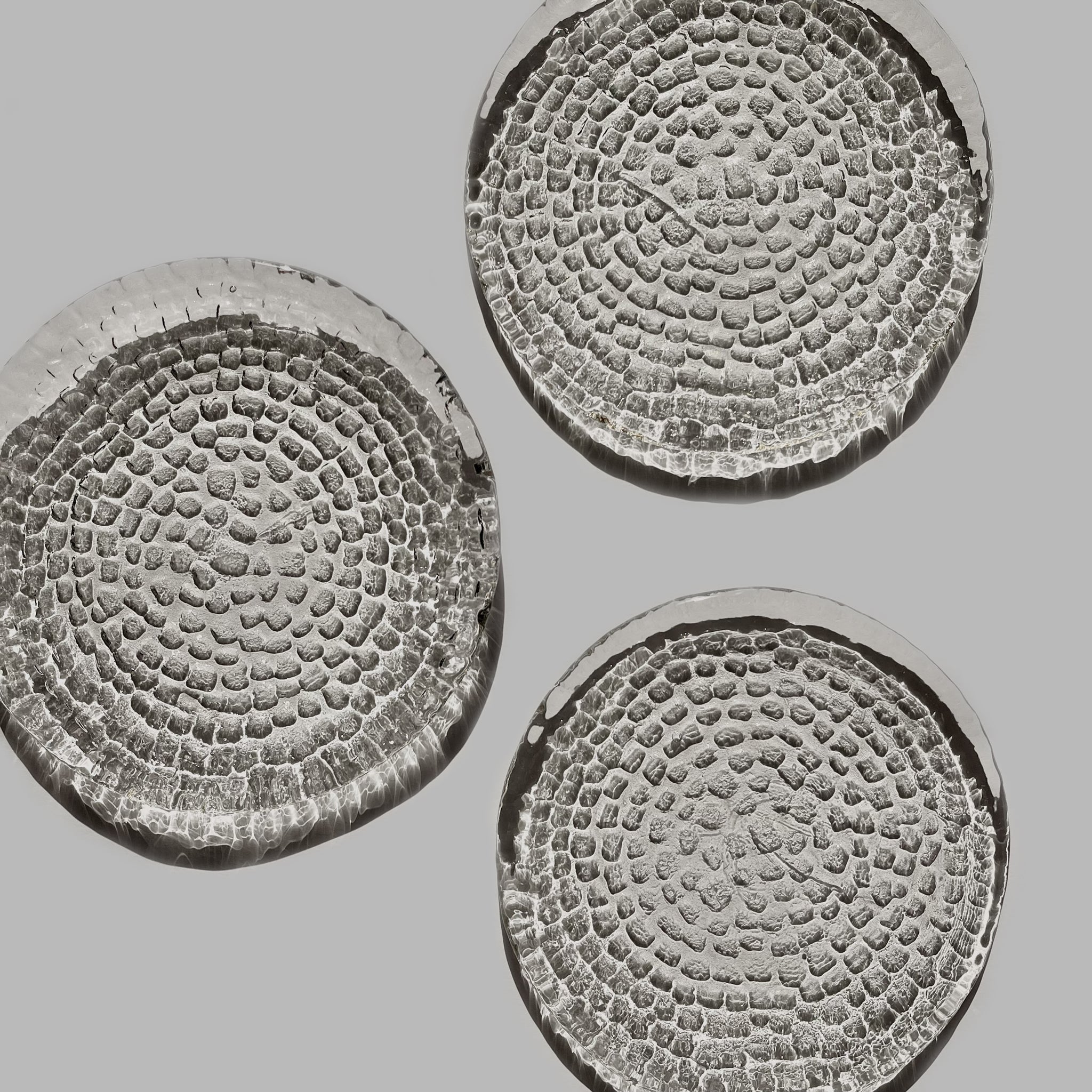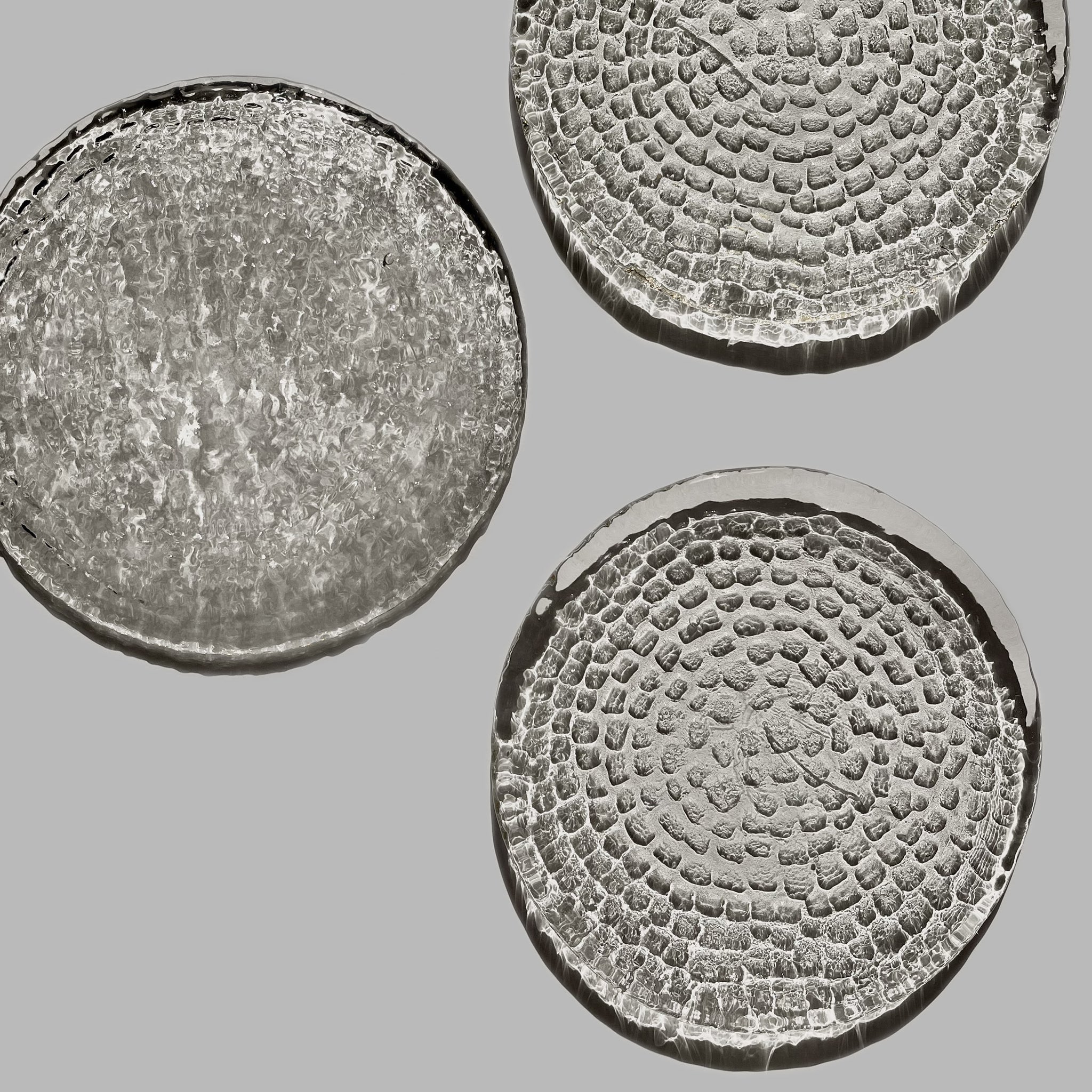Set of 3 Bruk textured glass plates designed by Drost for Zabkowice Glassworks, Poland, 1970s.
Set of 3 textured glass plates designed by J. & E. Drost for Zabkowice Glassworks, Poland, 1970s.
This rare vintage set showcases mid-century European glass design, featuring sculptural and organic, ice-like texture. Inspired by northern geographies and elemental materials, these plates blend craft, design, and nature. They serve as collectible objects, decorative serving pieces, or sculptural tableware.
Works by Jan Sylwester Drost are part of the Corning Museum of Glass’s permanent collection, highlighting his importance in 20th-century glass design.
OBJECT SPECIFICATIONS
PRODUCT: Set of 3 Bruk glass plates
DESIGNERS: Jan Sylwester Drost & Eryka Trzewik-Drost
MANUFACTURER: Huta Szkła Gospodarczego / Glassworks Ząbkowice
ORIGIN: Poland
PERIOD: 1970s
MATERIAL & TECHNIQUE: Pressed glass
COLOR: Clear
TEXTURE: Frost-like relief, characteristic for the 1970s glass design
CONDITION: Exceptional condition — unused
DIMENSIONS: (+-) Diameter: 14 cm

Jan & Eryka Drost
Jan Sylwester Drost (1934-2024) and Eryka Drost (1931) emerge from the rich fabric of Polish design, where craftsmanship and bold expression intertwine. Their work — vivid, textured, and tangible — evokes a tactile dialogue between surface and structure, tradition and modernity.
Renowned for their pioneering glasswork produced in collaboration with the Ząbkowice glassworks, the Drosts masterfully explored the tactile dimension of glass. Their pieces — richly textured, sculptural, and often asymmetrical — challenge the material’s traditional transparency, inviting the hand to read surface as much as the eye. This focus on texture and form resonates with contemporaneous glass innovations in Finland and Sweden, where designers similarly pushed glass beyond its functional role toward expressive, almost geological objects.
Their work has transcended regional recognition to become part of the global narrative of modern glass. The National Museum in Warsaw and National Museum in Wrocław holds key pieces by Jan and Eryka Drost — showcased in a retrospective that elevated their designs from everyday use to museum-worthy objects. Jan Drost’s work is part of the permanent collection at the Corning Museum of Glass, confirming his place within the international canon of glass design. These references highlight how the Drost’s sculptural and tactile glass language has earned its place in 20th-century design history — in dialogue with major glass collections worldwide.



